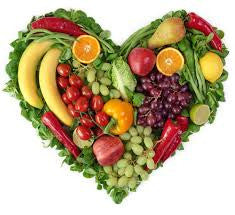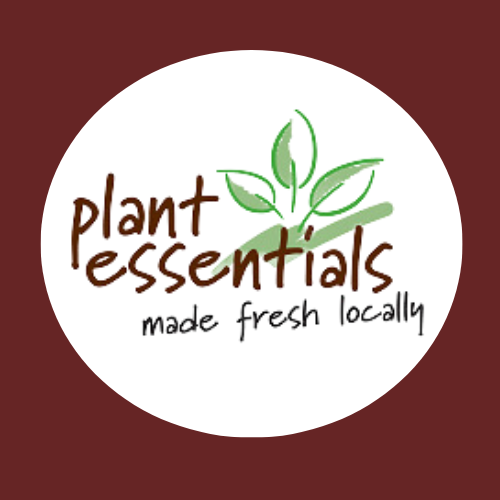
What Types of Produce Have the Highest and Lowest Levels of Pesticide Residues?
A study by Consumers Union, the publishers of Consumer Reports magazine, examines and rates the residual levels of pesticides on many common fruits and vegetables. A report by the Environmental Working Group, using data from the U.S. Food and Drug Administration, has found that much of the health risks associated with pesticides are concentrated in a relatively small number of fruits and vegetables. The list below is compiled from these reports.
Produce with Highest Levels of Pesticide Residues:
Strawberries - Vitamin C
Green & RedBell Peppers - Vitamins A, C
Spinach- Vitamins A, C, Folic acid
Cherries (US) - Vitamin C
Peaches- Vitamins A, C
Cantaloupe (Mexico) - Vitamins A, C, Potassium
Celery- Carotenoids
Apples- Vitamins A, C, Potassium
Apricots- Vitamins A, C, Potassium
Green Beans- Carotenoids
Grapes (Chile) - Vitamin C, Potassium
Cucumbers- Vitamin A, Potassium
Pears- Vitamins A, C, Folic acid
Winter Squash (US) - Vitamins A, C. Folic acid, Potassium
Potatoes (US) - Vitamin C, Folic acid
Produce with the Least Levels of Pesticide Residues:
Avocados - Vitamins A, C, Folic acid
Corn - Carotenoids, Folic acid
Onions - Trace vitamins, carotenoids
Sweet Potatoes - Potassium, vitamins A, C
Cauliflower - Vitamin C, Potassium
Brussels Sprouts - Folic acid, vitamins A, C
Brussels Sprouts - Folic acid, vitamins A, C
Grapes (US, Mexico) - Vitamin C
Bananas - Potassium, vitamin C
Plums - Vitamin C
Green Onions - Vitamins A, C
Watermelon - Potassium, vitamins A, C
Broccoli - Potassium, vitamins A, C
How To Make Produce Safer
Buy Organic
Produce which is "Certified Organic" will cost more, but is your best assurance of pesticide-free status. Although the chart above is useful, it is not 100% accurate; growing methods can change from year to year, and country-of-origin considerations make it more difficult to know exactly what you're buying. For example, the US exports annually 100 - 150 million tons of banned (in theUS) pesticides, and then imports fruit which may be grown using these pesticides. Buying organic, in-season produce from your local market is the best assurance of pesticide-free produce.
Vegetable and Fruit Washes
Commercial vegetable and fruit washes are available which are formulated to remove chemical residue from produce. Examples are Environné and Vitanet, available online or at your local health food stores and some supermarkets. You can also make your own produce wash using a very diluted solution of mild dishwashing detergent (1 tsp detergent per gallon, or 4 liters, water).
For grapes, strawberries, green beans, and leafy vegetables, swirl the foods in a dilute solution of dish detergent and water at room temperature for 5 to 10 seconds, then rinse with slightly warm water.
For the other fruits and vegetables, use a soft brush to scrub the food with the solution for about 5 to 10 seconds, then rinse again with slightly warm water.
Peel Fruits with Higher Residue Levels
Peeling fruits, especially peaches, pears and apples, will help remove residues. Be sure to keep the peelings out of the compost. Some pesticides permeate the skin of the fruit, so this method does not guarantee residual free produce in all cases.
Grow Your Own
Looking at the list of most contaminated fruits and vegetables, you can chose to grow some of these yourself. Even a small backyard plot can be very productive for family use. Bell peppers, for example, are easy to grow in most hot or temperate climates, especially when grown in a garden cloche. Green beans and grapes can be grown vertically on trellises which can also serve as a shade provider during the summer months. Apples can be grown in most climates, and columnar varieties can even be grown in pots on the deck or rooftop. See our page on fruit trees. Peaches can be grown in the backyard in warm to hot climate zones, but often require a method of covering to protect the tree from rain-borne disease. Spinach and cucumbers are easy, if you have the ground space. You can plant one or two of these crops in your yard and encourage a neighbor to grow others - then share the harvests.
---------------------------------------------------------
Tips
~ Although apples rank high in pesticide residue, apple juice ranks low. Apple juice is a good substitute for non-organic apples.
~ The residue levels in canned peaches are drastically lower than for fresh peaches. The processing requires vigorous washing which removes most residues from the skin. Also, different varieties of peaches are grown for canning, which require less pesticide to grow.
~ Sprouts are easy to grow in the home, very inexpensive and highly nutritious. Sprouts may be the simplest source of organic produce for you and your family.
~ Some of the fruits and vegetables which rank low on the pesticide residue scale may have higher rates of pesticide residue if they come from certain countries. Ask the produce manager in your local supermarket for country-of-origin information.
~ Cherries from the US are three times more contaminated than their imported counterparts, which are among the cleanest fruits and vegetables analyzed. Cherries contain a compound known as ellagic acid which counteracts carcinogens, so it's worthwhile to seek out a source of imported cherries if you live in the US or Canada.
~ Are pesticide residues less of a problem in canned and frozen fruits and vegetables? Probably, although most of the research has been done by the food industry. The washing and blanching to prepare fruits and vegetables for canning or freezing removes or destroys approximately 80-90% of pesticide residues, according to the U.S. based National Food Processors Association.
http://eartheasy.com
- Choosing a selection results in a full page refresh.
